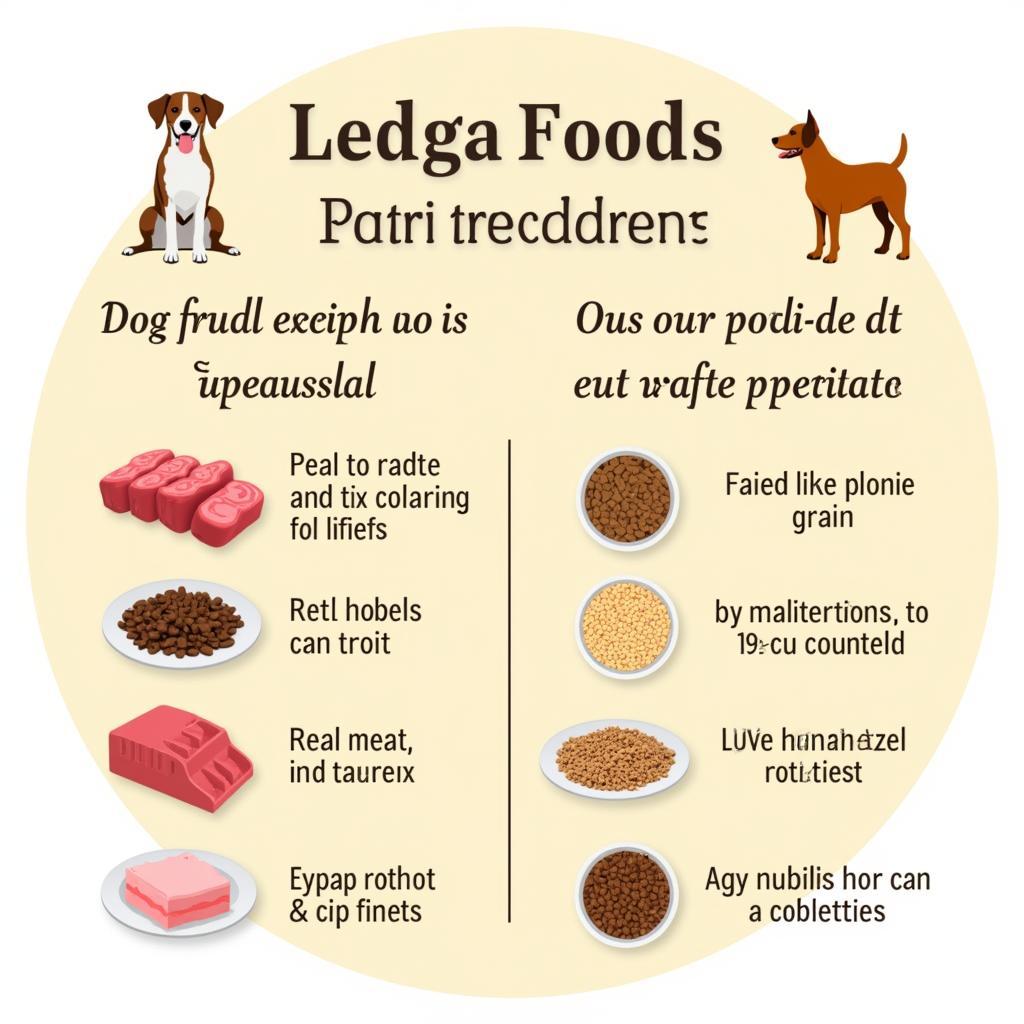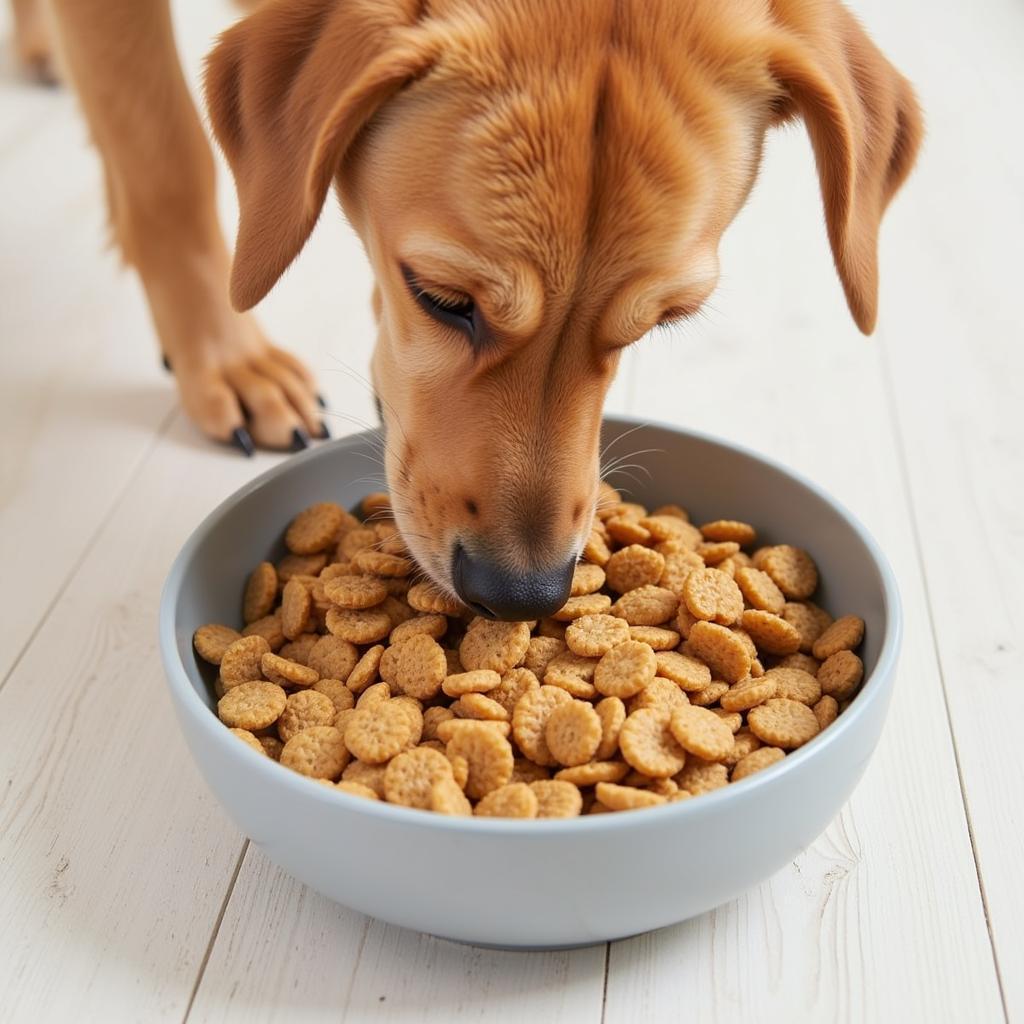Dog Food Pate is a moist, soft food option that’s popular with many pet owners. Its smooth texture makes it particularly appealing to picky eaters or dogs with dental issues. But with so many options available, how do you choose the best dog food pate for your furry friend? This guide will delve into the world of pate-style dog food, exploring its benefits, ingredients, and how to make the right choice for your canine companion.
Choosing the right dog food is crucial for your pet’s health and well-being. Pate offers a palatable alternative to dry kibble, especially for dogs who prefer a softer texture. It’s also often higher in moisture content than kibble, which can be beneficial for dogs who don’t drink enough water. From understanding ingredient lists to considering your dog’s individual needs, this comprehensive guide will equip you with the knowledge to make an informed decision. You can even learn more about specific diets, like the best dry dog food for pitbulls.
Understanding the Benefits of Dog Food Pate
What makes pate a good choice? Beyond its appealing texture, dog food pate offers several advantages. Many formulas are designed for specific life stages or health conditions. For instance, senior dog food pate may contain added joint support supplements, while puppy formulas are packed with essential nutrients for growth.
- High palatability: The smooth, soft texture is often more enticing for picky eaters.
- Increased moisture content: Helps keep dogs hydrated, particularly beneficial for those prone to urinary tract issues.
- Easier to digest: Can be a good option for dogs with sensitive stomachs.
- Variety of formulas: Available in a wide range of recipes to cater to specific dietary needs.
 Happy Dog Eating Pate
Happy Dog Eating Pate
Decoding Dog Food Pate Ingredients
Just like human food, the quality of dog food pate depends heavily on its ingredients. Look for pate with real meat or poultry listed as the first ingredient. Avoid by-products, fillers, and artificial colors or flavors. High-quality pate will prioritize whole, recognizable ingredients. You might even find some overlap in ingredients used for other pets, such as chicken canned cat food.
What to Look for:
- Real meat or poultry: Provides essential protein for muscle development and energy.
- Whole grains or vegetables: Offer fiber for digestive health.
- Healthy fats: Support skin and coat health.
- Vitamins and minerals: Ensure balanced nutrition.
What to Avoid:
- By-products: Lower quality ingredients with less nutritional value.
- Fillers: Offer little to no nutritional benefit and can contribute to weight gain.
- Artificial colors and flavors: Unnecessary additives that can potentially cause allergies.
 Dog Food Pate Ingredient List
Dog Food Pate Ingredient List
Choosing the Right Pate for Your Dog
Choosing the best pate isn’t a one-size-fits-all process. Factors like age, breed, activity level, and any health conditions should be considered. Consult your veterinarian for personalized recommendations. They can provide valuable insights based on your dog’s specific needs. And remember, what works for one dog may not work for another. Even switching to something like pate style dog food can make a big difference.
Key Considerations:
- Life stage: Puppies, adults, and seniors have different nutritional requirements.
- Breed size: Small, medium, and large breeds have varying metabolic needs.
- Activity level: Active dogs require more calories than sedentary dogs.
- Health conditions: Allergies, sensitivities, or specific health issues may require specialized formulas.
Dr. Emily Carter, a veterinary nutritionist, emphasizes, “Choosing the right pate is about more than just picking a flavor your dog likes. It’s about providing balanced nutrition that supports their overall health and well-being.”
Transitioning to Dog Food Pate
If you’re switching your dog from kibble to pate, do so gradually to avoid digestive upset. Start by mixing a small amount of pate with their usual kibble, gradually increasing the proportion of pate over several days. This allows their digestive system to adjust to the change.
 Dog Transitioning to Pate
Dog Transitioning to Pate
Conclusion
Dog food pate can be a nutritious and delicious option for many dogs. By understanding the ingredients and considering your dog’s individual needs, you can choose a pate that supports their health and happiness. Remember to consult your veterinarian for personalized recommendations, especially if your dog has any underlying health conditions. Choosing the right dog food pate is a crucial step in ensuring your furry friend thrives.
FAQs
- Is dog food pate better than dry food? Both pate and dry food have their benefits. Pate offers higher moisture content, while dry food can be more convenient and help with dental health. The best choice depends on your dog’s individual needs.
- How do I store opened dog food pate? Refrigerate opened cans or pouches of pate and use within a few days.
- Can I mix pate with dry food? Yes, mixing pate with dry food can be a good way to add moisture and flavor to your dog’s meals.
- How often should I feed my dog pate? Follow the feeding guidelines on the product packaging, adjusting portions based on your dog’s age, breed, and activity level.
- What are the signs of food allergies in dogs? Common signs include itching, skin rashes, digestive upset, and ear infections.
- Can puppies eat dog food pate? Yes, there are pate formulas specifically designed for puppies.
- How do I know if my dog is enjoying the pate? A clear sign is a clean bowl! Look for enthusiastic eating and a healthy coat and skin.
Interested in exploring other food options? Check out our articles on food truck friday indianapolis and the hood food truck.
For support, contact us at Phone: 02437655121, Email: minacones@gmail.com Or visit our address: 3PGH+8R9, ĐT70A, thôn Trung, Bắc Từ Liêm, Hà Nội, Việt Nam. We have a 24/7 customer service team.